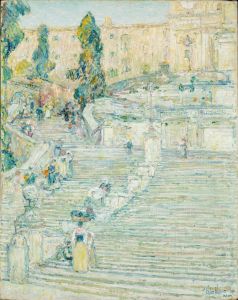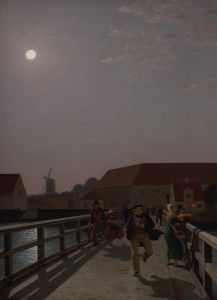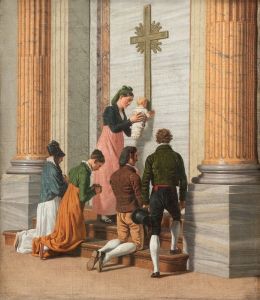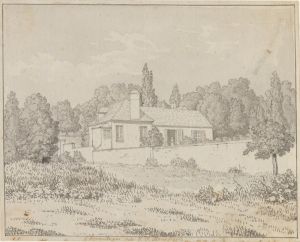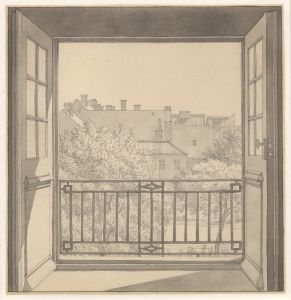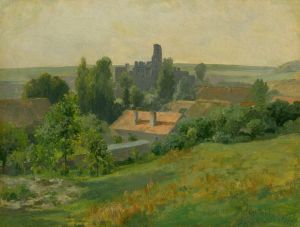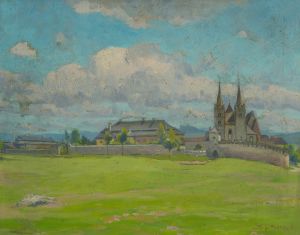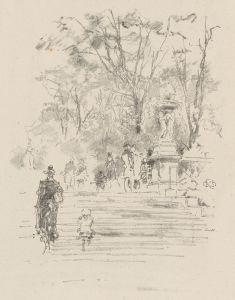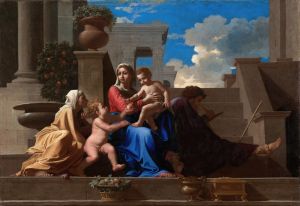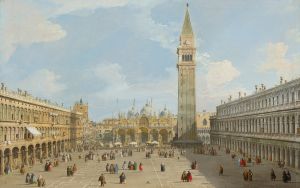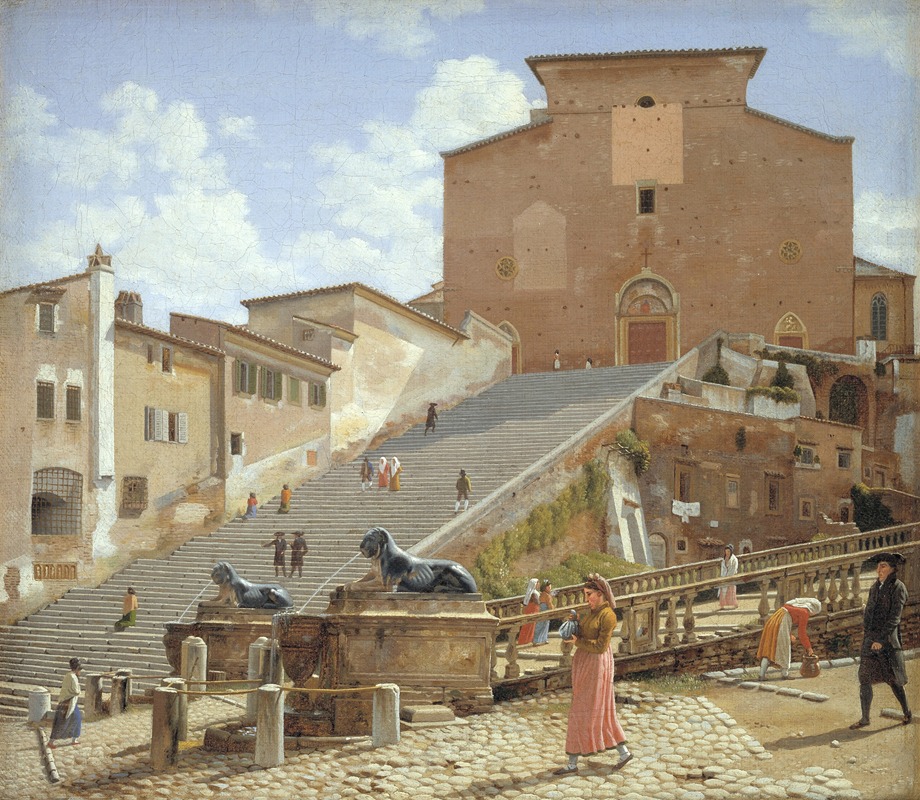
The Marble Steps leading up to the Church of Santa Maria in Aracoeli in Rome
A hand-painted replica of Christoffer Wilhelm Eckersberg’s masterpiece The Marble Steps leading up to the Church of Santa Maria in Aracoeli in Rome, meticulously crafted by professional artists to capture the true essence of the original. Each piece is created with museum-quality canvas and rare mineral pigments, carefully painted by experienced artists with delicate brushstrokes and rich, layered colors to perfectly recreate the texture of the original artwork. Unlike machine-printed reproductions, this hand-painted version brings the painting to life, infused with the artist’s emotions and skill in every stroke. Whether for personal collection or home decoration, it instantly elevates the artistic atmosphere of any space.
Christoffer Wilhelm Eckersberg, a prominent Danish painter, is often referred to as the father of Danish painting. He played a crucial role in the development of the Danish Golden Age of painting. One of his notable works is "The Marble Steps leading up to the Church of Santa Maria in Aracoeli in Rome," which exemplifies his mastery in capturing architectural details and the interplay of light and shadow.
Eckersberg was born in 1783 in Blåkrog, Denmark, and he studied at the Royal Danish Academy of Fine Arts in Copenhagen. His artistic journey took a significant turn when he traveled to Paris in 1810 to study under the renowned French painter Jacques-Louis David. This experience greatly influenced his style, particularly his focus on clarity, precision, and the classical approach to composition.
In 1813, Eckersberg embarked on a pivotal journey to Rome, which was a common destination for artists seeking inspiration from the classical antiquities and Renaissance masterpieces. During his stay in Rome, he produced several works that captured the essence of the city's architecture and landscapes. "The Marble Steps leading up to the Church of Santa Maria in Aracoeli in Rome" is one such painting, created during this fruitful period.
The Church of Santa Maria in Aracoeli is situated on the Capitoline Hill, one of the seven hills of Rome, and is renowned for its historical and religious significance. The church is accessible via a grand staircase, which Eckersberg chose as the subject of his painting. This choice reflects his interest in architectural forms and his ability to render them with meticulous attention to detail.
In the painting, Eckersberg skillfully depicts the marble steps leading up to the church, capturing the texture and sheen of the stone. The composition is marked by a strong sense of perspective, drawing the viewer's eye upwards towards the entrance of the church. The play of light and shadow on the steps is rendered with precision, showcasing Eckersberg's keen observational skills and his ability to convey the atmosphere of the scene.
Eckersberg's work is characterized by its clarity and order, qualities that are evident in this painting. His approach to composition often involved careful planning and an emphasis on balance and harmony. This is reflected in the way he organizes the elements within the painting, creating a sense of calm and stability.
"The Marble Steps leading up to the Church of Santa Maria in Aracoeli in Rome" is a testament to Eckersberg's ability to transform a seemingly mundane subject into a work of art that captures the viewer's attention. His focus on architectural elements and the effects of light and shadow are indicative of his broader artistic interests and his contribution to the Danish Golden Age of painting.
Eckersberg's influence extended beyond his own works, as he became a professor at the Royal Danish Academy of Fine Arts upon his return to Denmark. He mentored a generation of Danish artists, instilling in them the principles of clarity, precision, and a deep appreciation for the natural world. His legacy is evident in the works of his students and the continued admiration for his contributions to art.
In summary, "The Marble Steps leading up to the Church of Santa Maria in Aracoeli in Rome" is a fine example of Christoffer Wilhelm Eckersberg's artistic prowess. Through his meticulous attention to detail and his ability to capture the essence of architectural forms, Eckersberg has left an indelible mark on the world of art, particularly within the context of the Danish Golden Age.





